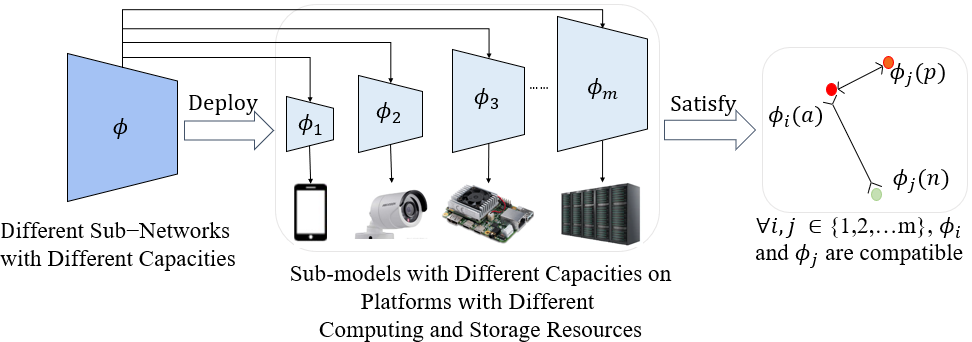Real-world visual search systems involve deployments on multiple platforms with different computing and storage resources. Deploying a unified model that suits the minimal-constrain platforms leads to limited accuracy. It is expected to deploy models with different capacities adapting to the resource constraints, which requires features extracted by these models to be aligned in the metric space. The method to achieve feature alignments is called "compatible learning". Existing research mainly focuses on the one-to-one compatible paradigm, which is limited in learning compatibility among multiple models. We propose a Switchable representation learning Framework with Self-Compatibility (SFSC). SFSC generates a series of compatible sub-models with different capacities through one training process. The optimization of sub-models faces gradients conflict, and we mitigate it from the perspective of the magnitude and direction. We adjust the priorities of sub-models dynamically through uncertainty estimation to co-optimize sub-models properly. Besides, the gradients with conflicting directions are projected to avoid mutual interference. SFSC achieves state-of-art performance on the evaluated dataset.
翻译:现实世界视觉搜索系统涉及在多个平台上部署具有不同计算和储存资源的不同平台。 部署适合最小封闭平台的统一模型导致的准确性有限。 预计它将部署能力不同、适应资源制约的模型,这需要这些模型的特征在计量空间中加以调整。 实现特征匹配的方法被称为“兼容学习 ” 。 现有研究主要侧重于一对一兼容模式,这在学习多个模型的兼容性方面是有限的。 我们提出了一个与自兼容性(SFSC)可转换的代表性学习框架。 SFSC通过一个培训进程生成了一系列不同能力兼容的子模型。 亚型模型的优化面临梯度冲突,我们从规模和方向的角度加以缓解。 我们通过不确定性估计来动态调整子型模型的优先事项,以便恰当地共同优化子型模型。 此外,预测方向相矛盾的梯度将避免相互干扰。 SFSC通过一个培训进程实现评估数据集的状态性能。






